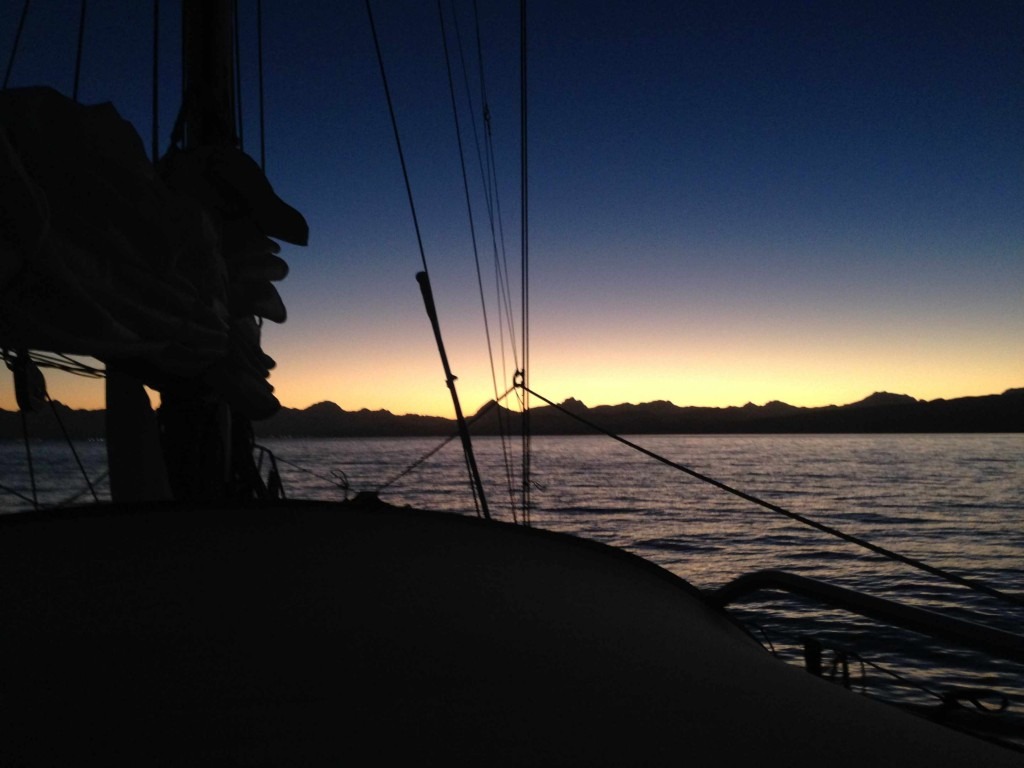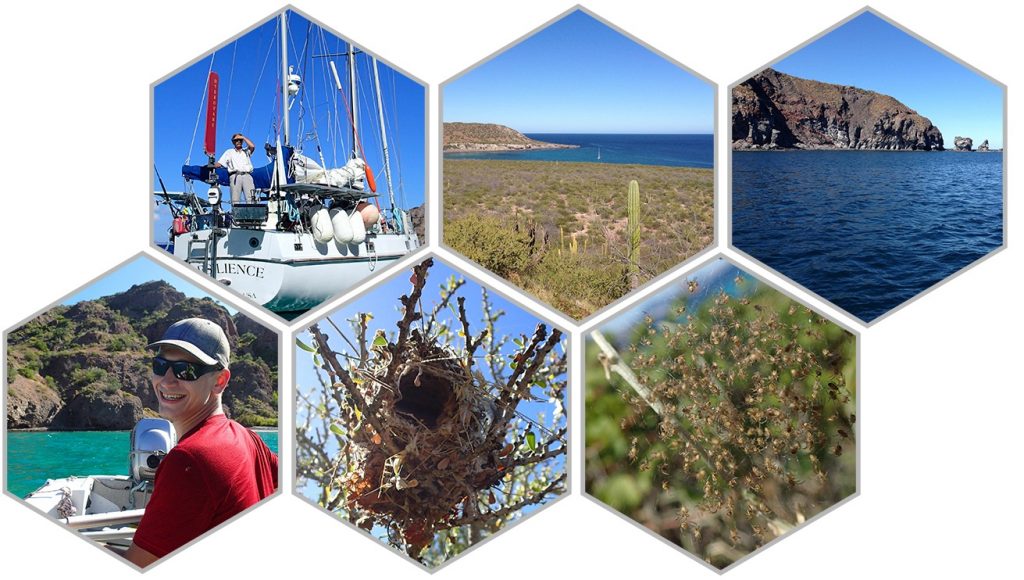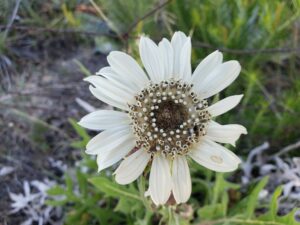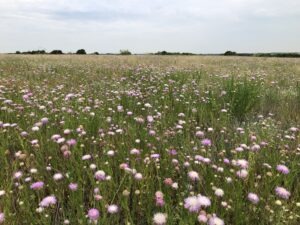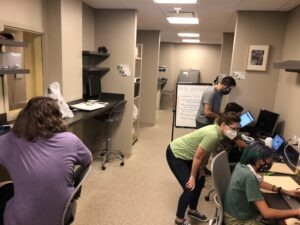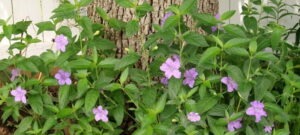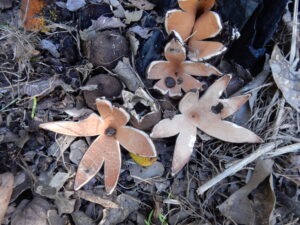This “Notes from the Field” post is from BRIT Biodiversity Explorer Dr. Sula Vanderplank, a Biodiversity Explorer for BRIT. She is a field botanist who loves natural history, floristics, and conservation science. Her research focuses on the botany and ecology of Baja California, Mexico.
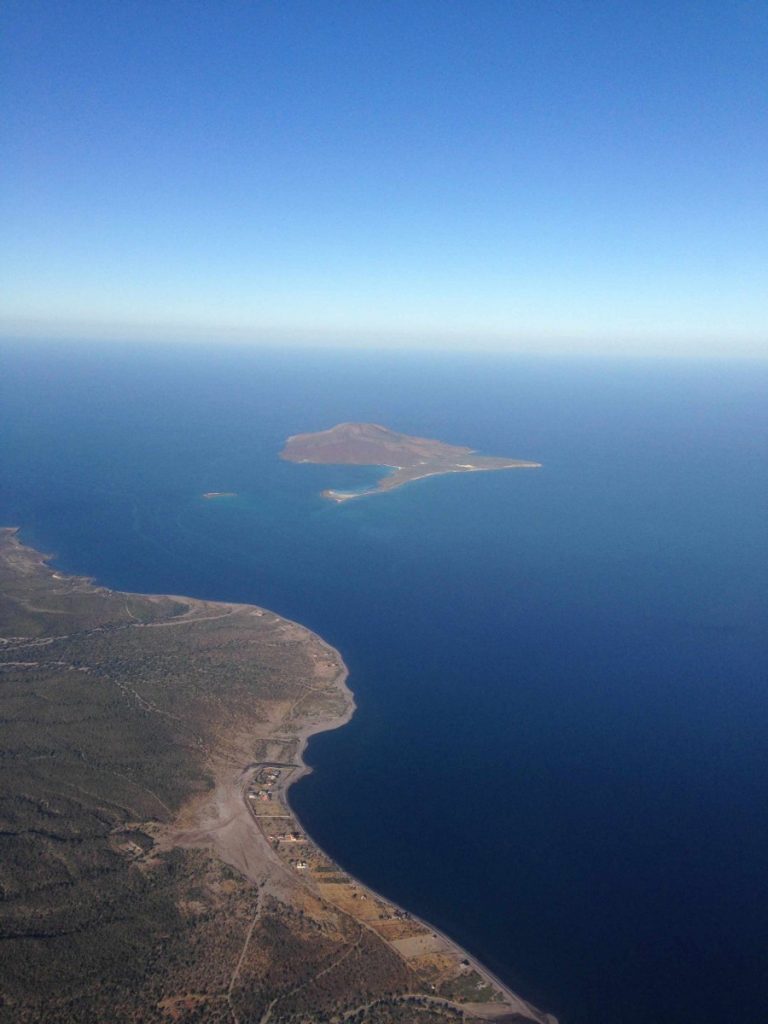
Loreto Island plant hunting onboard Resilience
Day 1 – Thursday, Nov 20th 2014, The arrival
It was a hot, sweaty hike across the international border into Baja California with my oversized back-pack and two roller-suitcases, but with a little help from a guy with a luggage cart and a friendly taxi driver I was soon at the Tijuana airport on my way to Loreto. The scenes from the plane were stunning, and arriving in Loreto I could not believe how lush and green the vegetation was. I headed south to Puerto Escondido – a sleepy picturesque port halfway down the peninsular side of the Sea of Cortez. My home for the next 10 days – the sailboat Resilience – is a magnificent vessel. She took my breath away at first glance, but with each passing hour I realized increasingly what a special boat she really is – so much attention to detail, so many novel and innovative solutions to small spaces, constant movement, and life at sea.
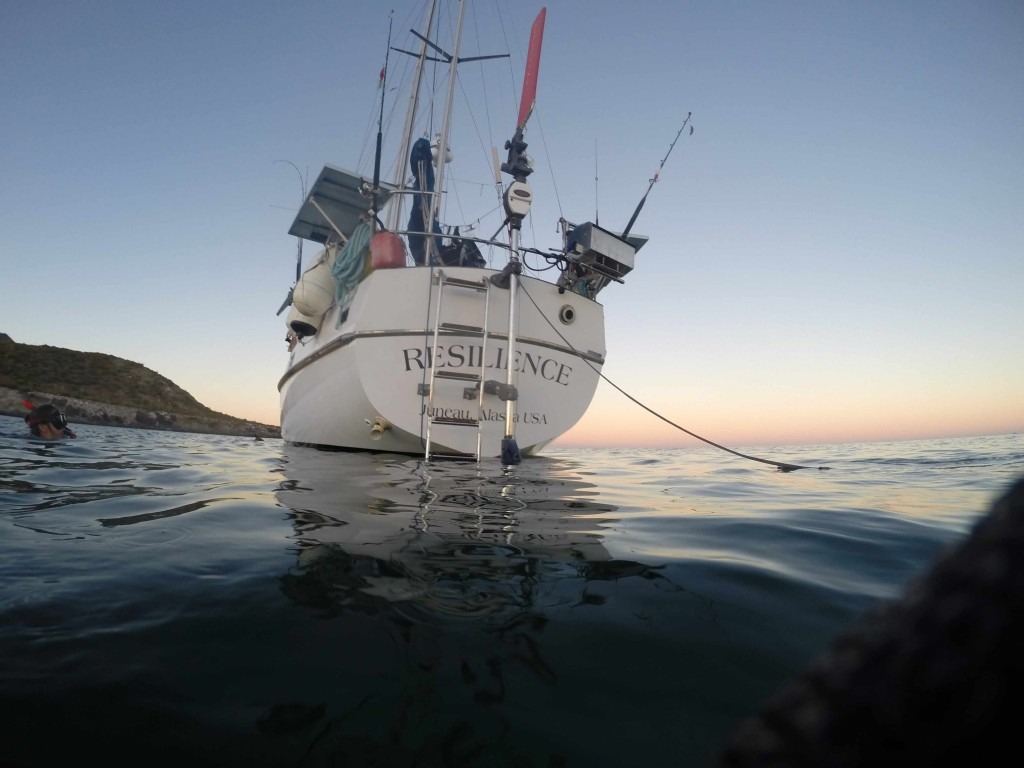
Resilience is a Contest 44 (42 ft long) from Juneau, Alaska, captained by Dr. Jim Taggart, and I join him and his family – Dr. Beth Matthews and Glen Taggart – and family friend Corwin Kelly as we help crew the boat for an amazing opportunity to visit the islands adjacent to Loreto Bay. Recent months have seen two serious hurricanes in this area and have left the southern peninsula lush and green and bursting with revitalized plant life. This makes it a particularly exciting time to go plant hunting on the islands, and I cannot wait! Everything about this trip is looking fantastic, and even the mosquitoes don’t bother me as I say goodbye to the mainland…
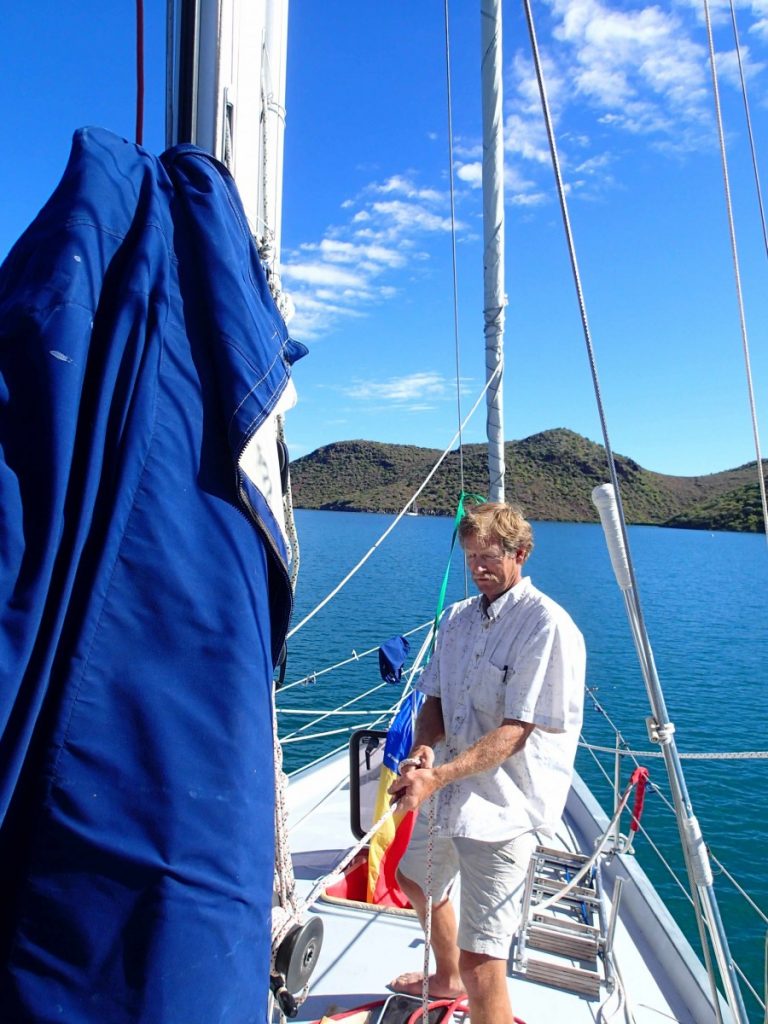
Day 2 – Friday, Nov 21st, Setting sail
There are so many exciting things to see and do and learn… it’s hard to know where to start. Luckily the decision was made for me, and soon we were climbing the mast whilst fish jumped all around our mooring. Hauling oneself up the mast is harder than it looks, and despite a ratcheting pulley that gives you a 50% weight advantage, my arms were shaking before I reached the lower spreader. It was exhilarating, and the view of the boat from high above was as pleasant as the distant view of the islands.
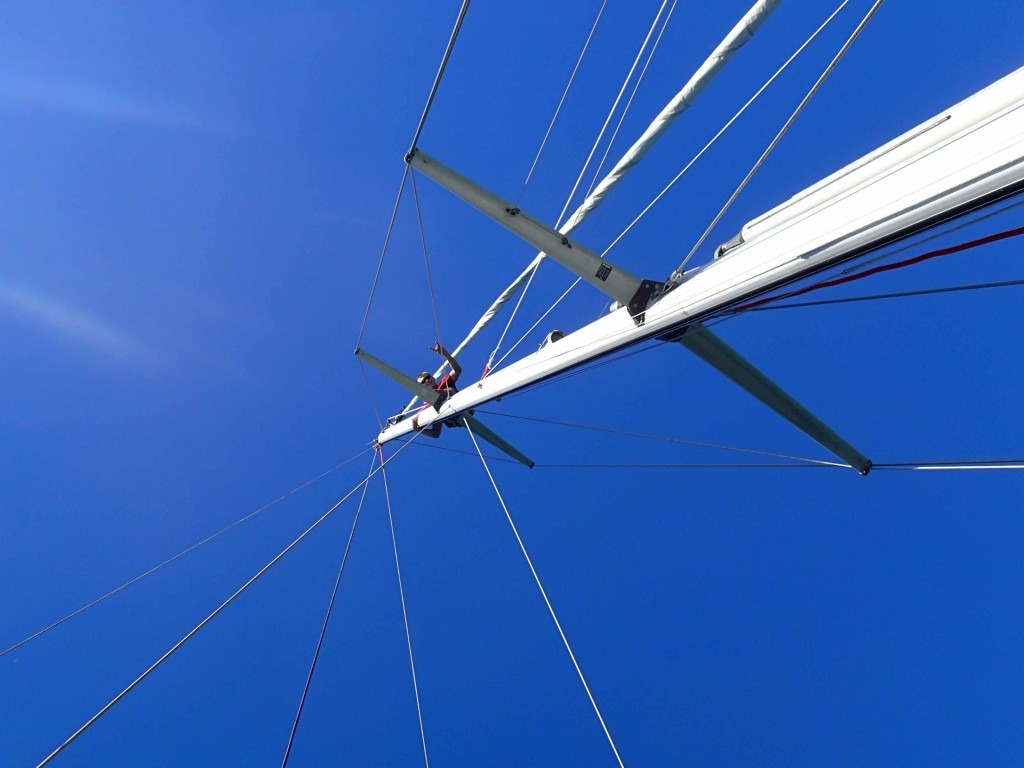
Last night I examined the engine room (this sailboat has an onboard diesel motor) and learned how to check the instruments. It’s the cleanest, most beautiful engine room and bilge I’ve ever seen! Dinner last night was freshly caught dorado, and this morning after breakfast we pored over charts and books on seaweed and shells and started our plan for the voyage; we will first go to Danzante Island. I am armed with a plant list recently annotated by regional botanical expert Jon Rebman, a field press, and a holding press for plant collecting, as well enough enthusiasm to sink a ship.
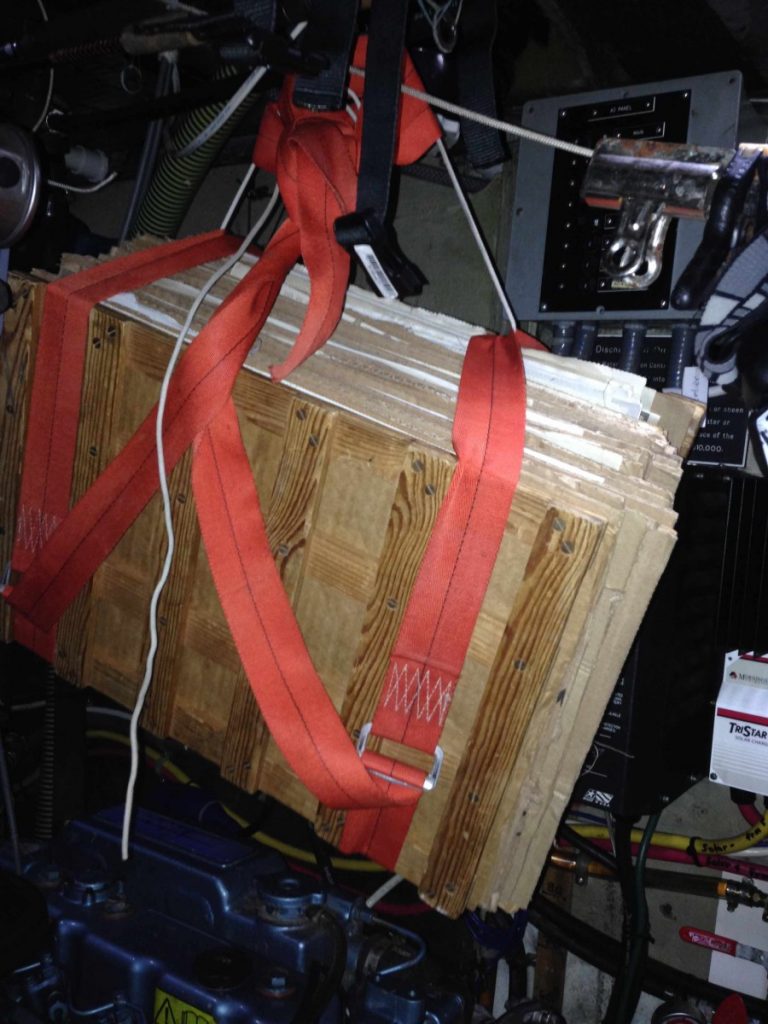
Day 3 – Saturday, Nov 22nd, Danzante
The remainder of yesterday was spent cutting cardboard boxes from the dumpster to fill my press with corrugates. Flying to the field makes transporting bulky field presses tough, so there is some need to improvise. It’s amazing what you can do with a box cutter and some scavenging! Despite some logistical challenges, in the evening we set sail. Leaving the harbor was exciting. We arrived at Honeymoon Bay anchorage as the sun was setting. We fished at dusk, catching a Pacific Porgy and three catfish of some sort for dinner. The stars were again amazing and the views of the island so breathtaking it was hard to sleep last night.
This morning I was restless during breakfast (which was the most delicious oatmeal of my life) as I nervously awaited my opportunity to set foot on the island. Soon Corwin and I took the Dory (the skiff) across to a sandy beach, and armed with totally inappropriate footwear and shorts, we set off up the slope looking for plants!
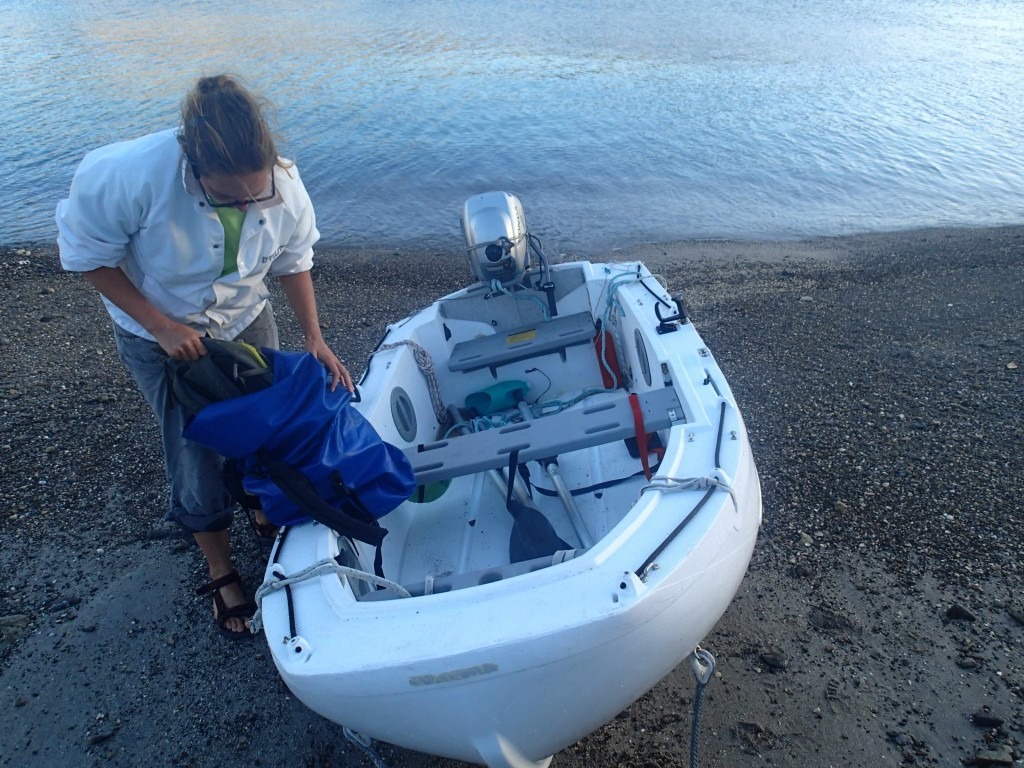
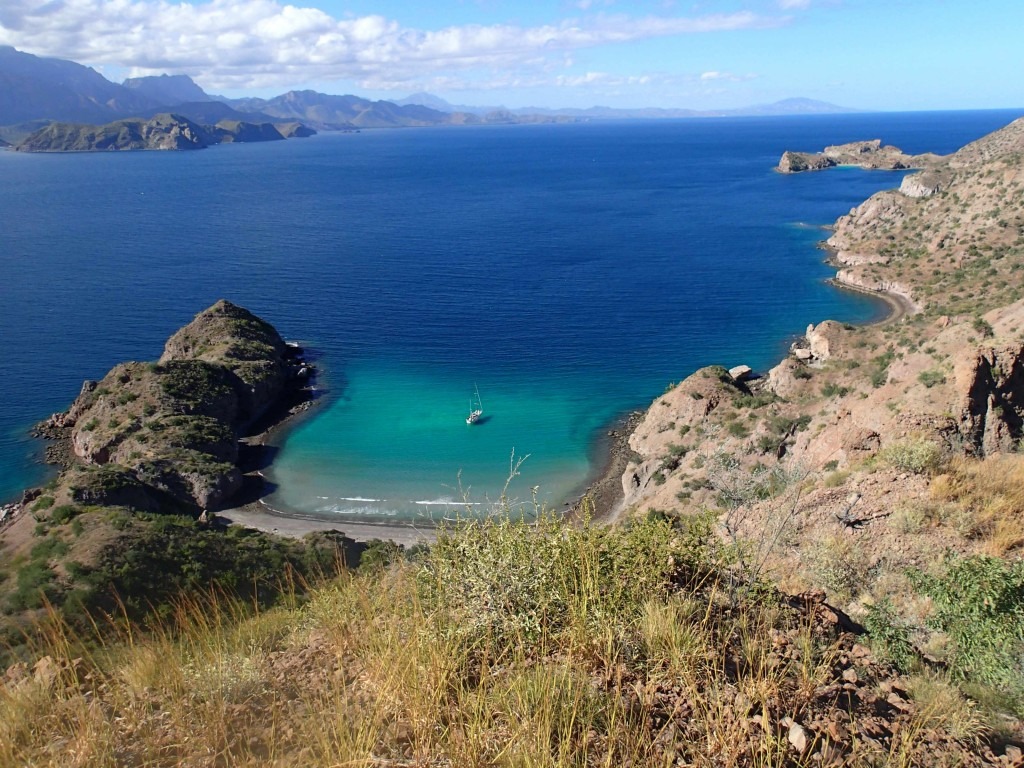
134 different plants have been either collected or reported from Danzante Island. We added at least one to this number today (and I suspect two), so I am very pleased. What I believe is a rather scrappy specimen of Datura wrightii – toloache or Jimson weed – was not previously reported. It is a very toxic plant in the potato family whose leaves give off a strong scent. Despite covering a tiny fraction of the island’s area, we encountered an impressive number of the species on the list – more than 80%.
Our arms and legs were ripped to shreds all day as we pushed our way through spiny undergrowth and past thorny trees. Despite our bloody appearance, our enthusiasm never waned as we traversed the slope like true explorers, finding a wealth of unusual insects, two species of lizards, and a giant tarantula amongst the botanical treasures. The flora is fairly typical of the Cape region of Baja California, and I recognize many old friends on the Island. There were numerous cacti – including several species of tall columnar cacti – and a century plant I’ve never seen before: Agave sobria, a beautiful blue agave but not a flower to be found. There were, however, butterflies everywhere, and some impressive stick-insects that we played with for a while.
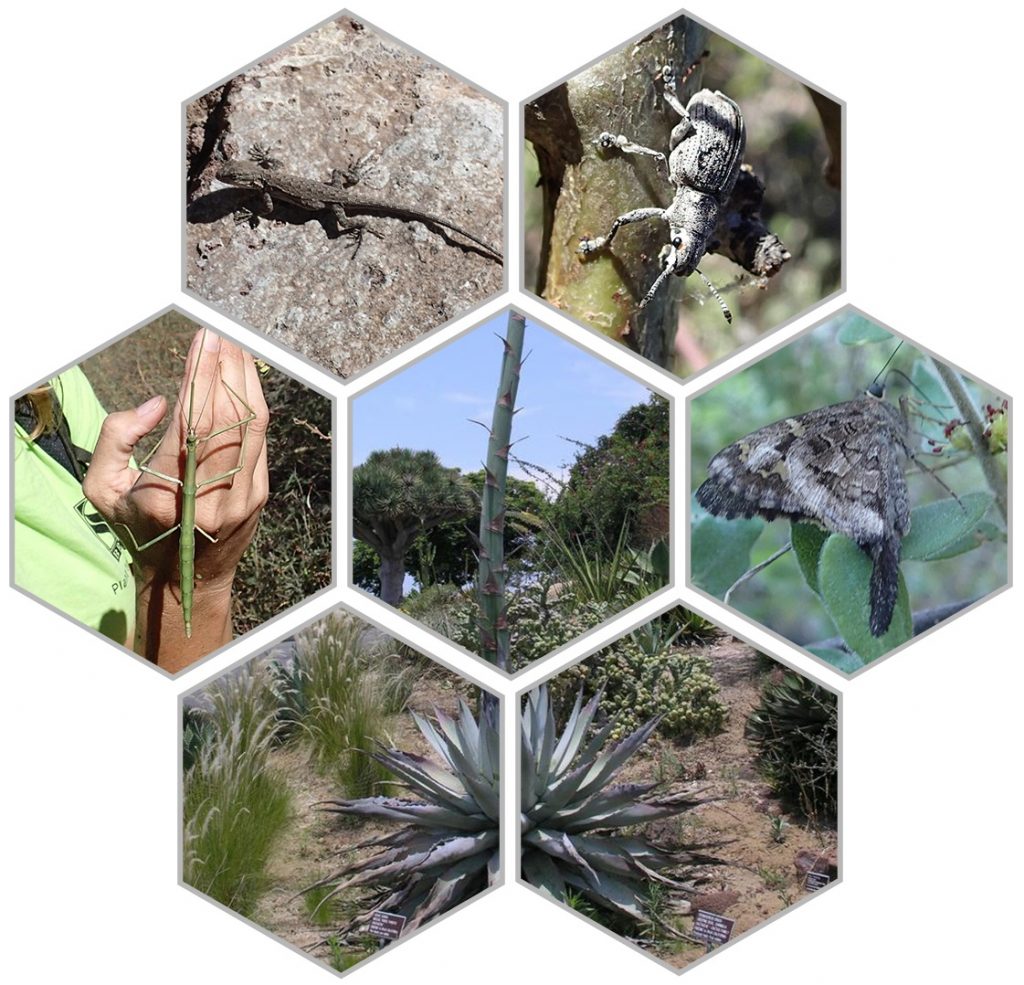
Day 4 – Sunday, Nov 23rd, Plant collecting by snorkel….
Last night I realized how amazing the snorkeling was. We saw an octopus out hunting, scores of puffer-fish, clouds of stripey angel fish, and shoals of fast-swimming sharky-looking things with yellow heads and black tails. I saw the strangest creature I have ever seen – like a giant jelly worm with a big head of feathers. We free-dove all around our cove and swam back to a big hot pot of fish soup. Naturally, first thing this morning I swam out to the mangrove fringe to collect the red mangrove, Rhizophora mangle, one of those plants that was on the list of observed species, but for which we had not yet been able to locate a previous herbarium specimen. Mangroves are amazingly important species that live with their roots in the water and provide a living nursery for more than a third of the commercially fished species in this region. These mangroves were no exception; the roots were full of fish, and I swam the edge putting the plant collection in my kill bag (I had the spear-gun along just in case, but today’s bounty was just vegetable). On the way back to the boat I saw a dark mobula ray swimming below me, and I giggled into my mask.
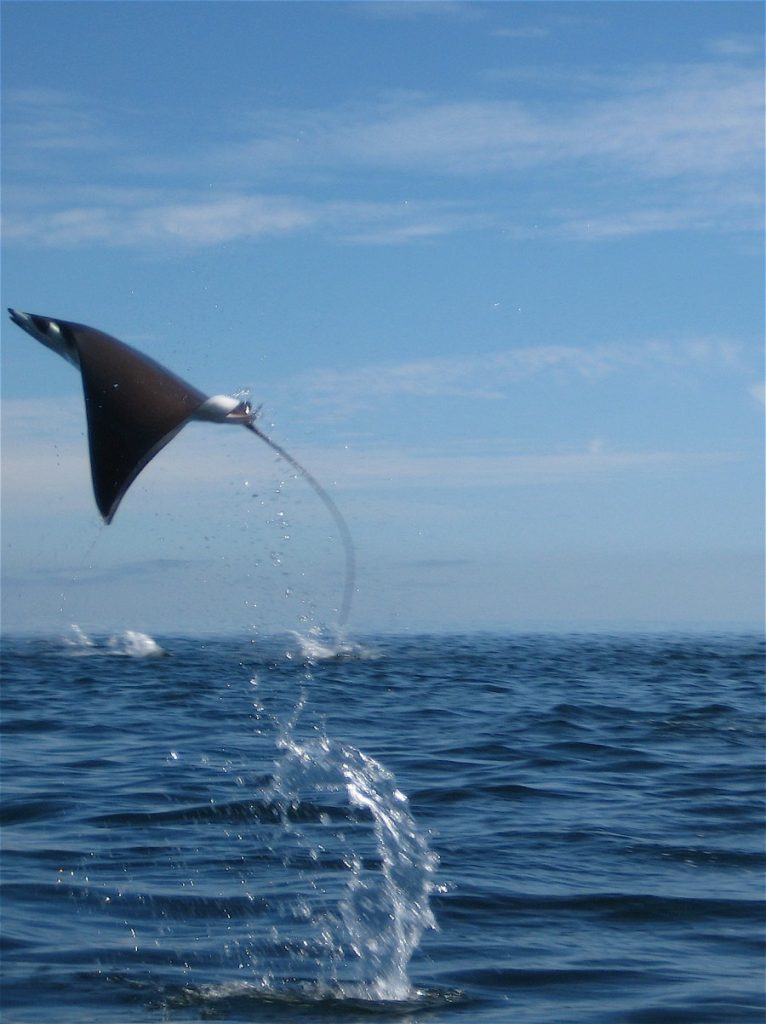
We headed back to shore fairly early to pick up Beth and Glen, whose flight had been cancelled two days earlier. This gave me a chance to nip to the store and pick up extra newspaper for the press which was a very welcome addition as I’d already collected more than 30 species. The reunion was a most happy one, and finally we set-off with full crew, this time headed toward Isla Carmen.
Day 5 – Monday, Nov 24th, Carmen…and the botanist trap
It was a stormy night, and the winds have stayed high so we took a skiff right into a lagoon to get ashore. At first it was hard to find a way through the mangrove and salt-marsh fringe, and our feet sank deep into the mud and soft sand, making us feel like hippos. The shells are amazing – and huge compared to the shells I’m used to finding. We moved up and down along the shore looking for a way through, eventually making it onto the flats behind the shore where a suite of things were flowering and there was a break from the wind.
Carmen Island has 201 plants reported, and we soon saw one or two of those that had not been vouchered. Corwin is my field assistant again, and his navigation sense is excellent; he finds the path and I follow, eyes on the ground. We make our way through a flat of mesquite and what look like miniature prairies of short grass towards the base of the red and grey volcanic rocks. We eat some sardines on a rock and decide to leave the Go-Pro camera to film whatever animal might come to check out our stinky lunch leftovers. The thought that we’re not alone on the island keeps us inspired as we spot deer tracks and jack-rabbit scat and the scat of something larger (perhaps a cat?). Again we see two large tarantulas on the path, and we watch the hummingbirds and listen to the doves, convinced that we could find enough food to survive here if we were marooned! We eat the seeds of the wild passionfruit that is sprawling all over the island (Passiflora palmeri), harvest the dry leaves of the wild oregano (Lippia palmeri), and pick some pickleweed or beach asparagus (Sarcocornia pacifica) to eat later.
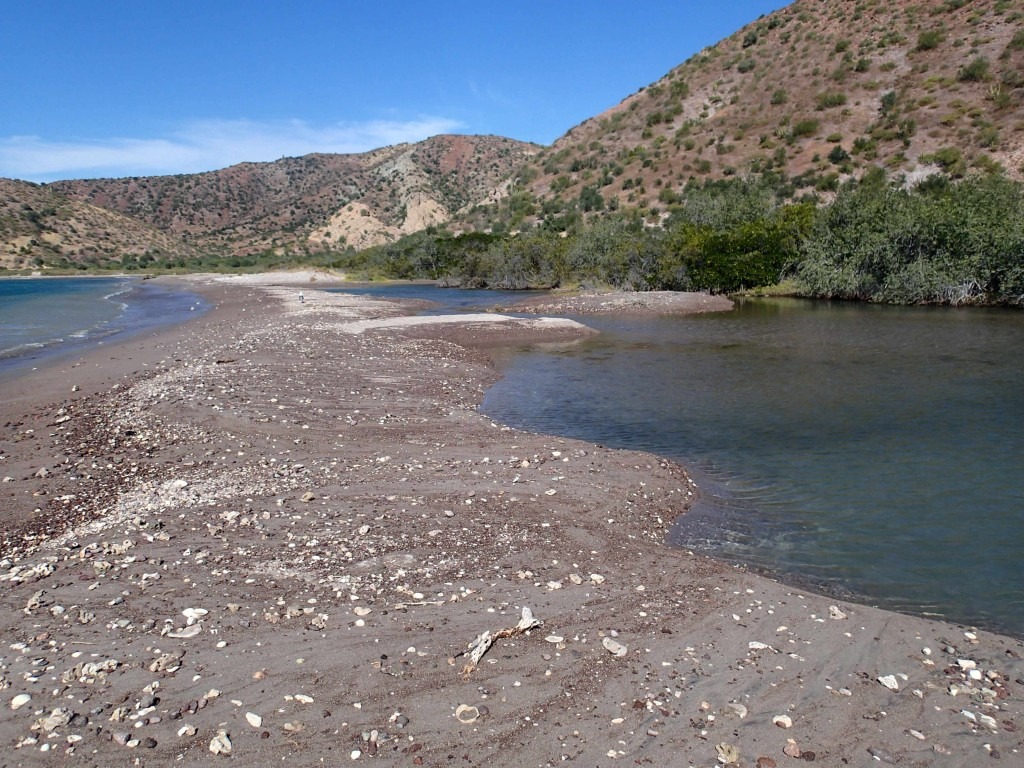
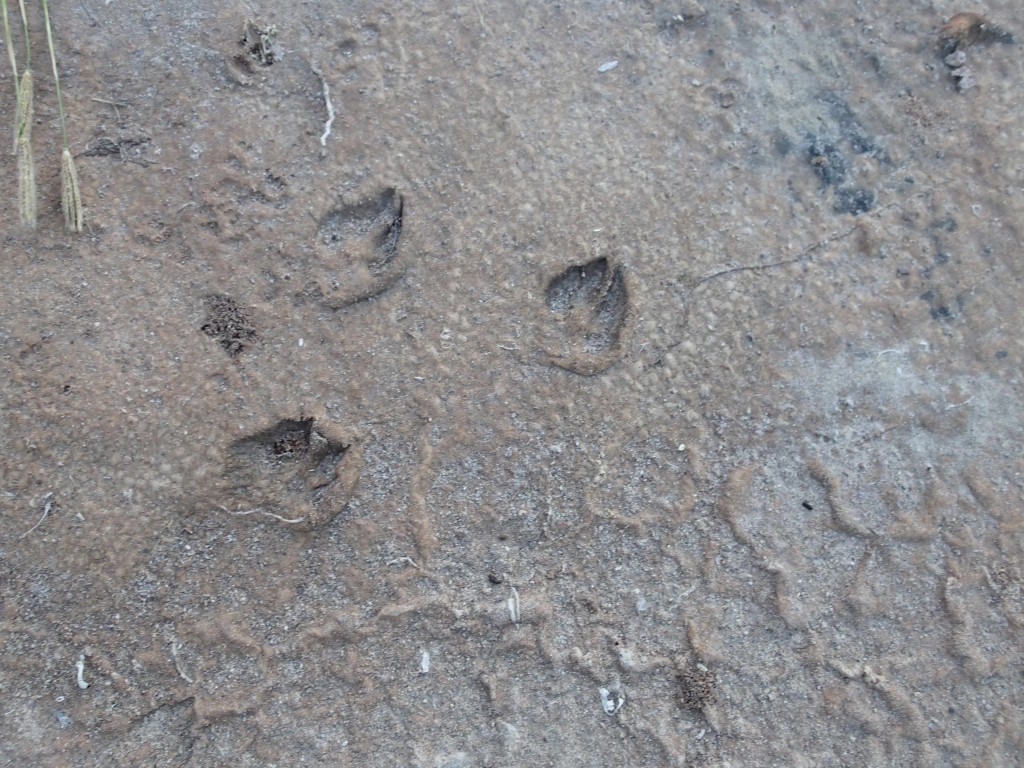
We collect in earnest, almost everything we see in flower (excluding large woody trees that have already been vouchered since pressing materials are limited). Soon we have three bulging bags of treasure, and we are up on the scree slopes of the higher ground, losing both our footing and our radio contact with the boat. We decide that caution isn’t such a bad idea, and collecting the strange plants growing straight out of the light volcanic ash as we go, we start to head back down. Once on firm footing, we were bounding down an arroyo when I fell in the botanist trap. A fairly large loose boulder wobbled, trapping my shin underneath its weight. It hurts like you-know-what, and I grab Corwin’s arm and squeeze as hard as I can in those seconds of silence as I try to figure out how badly I’ve injured myself. He quickly pours water on my leg, and we realize it is just bruised and I’ll be fine. A little slower now, we head back to the Go-Pro camera, whose battery has died, although the bait looks untouched. Reaching the shore, we realize the winds have picked up and getting back to the boat is going to be an adventure. We sent our bags with the first skiff, and then we stood waste deep in the waves waiting for our return to the mothership.
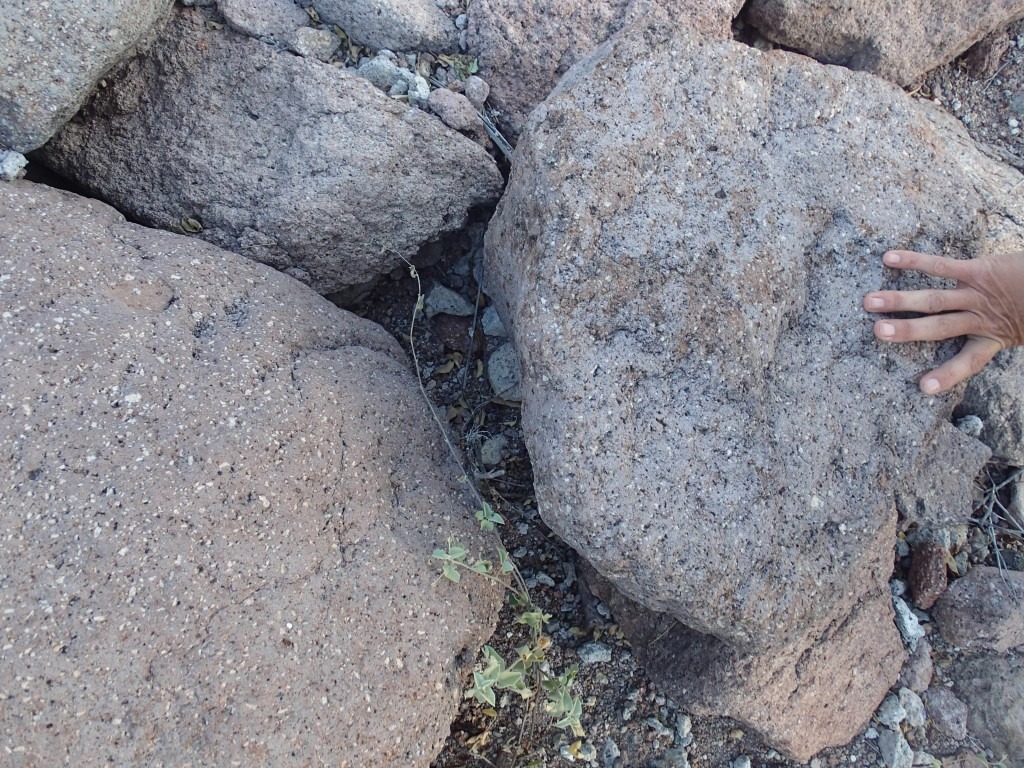
I had a quick attempt at fishing to no avail. Too windy. There is plenty to press, though, and I take up the entire main salon with my pressing supplies. Beth has baked fresh bread, and I cannot believe how well we are living. It’s such a paradise. It’s hard to understand why everyone isn’t on a sailboat on the Sea of Cortez. The dinner conversation is again lively, thought-provoking, and engaging, and I feel nurtured intellectually by the company as much as I am spiritually by the surroundings.
Day 6 – Tuesday, Nov 25th
It’s windy. Really windy. One doesn’t feel like doing much. The sway of the boat I enjoy enormously as we roll with the swell; the boys play cards, I write. I slept better last night now that I’m used to the noise of the anchor chain, and I’ve found a way to curl up that stops me from rolling in my bunk. Corwin reminds me of my brother. He’s always doing something to stay in shape – pull-ups from the galley hatch, weight-lifting with the dive weights, or hoisting buckets of water up just for the core-workout. I’m glad to be spending the holidays with such a nice group of people.
Day 7 – Wednesday, Nov 26, 2014, Kill day
It’s still windy, and we’ve realized that if the wind drops early tomorrow morning we can make it to a third island. But tomorrow necessitates a family feast since it is Thanksgiving. That means we must catch food today. Today is kill day. We set out early with the spear-gun, and with remarkable success we soon had four different species for tomorrow’s meal.
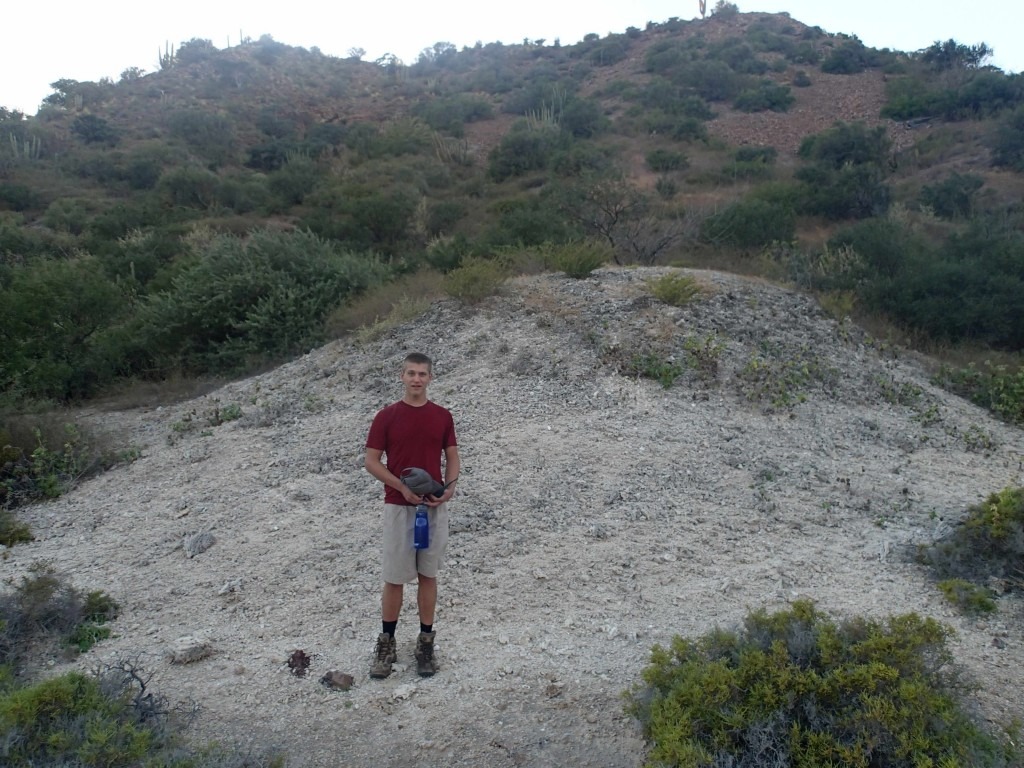
That left a little time for Corwin and I to go ashore Isla Carmen again in the calm of the afternoon, taking advantage of the shelter from the north wind and landing on the beach. We hike to a stunning outcrop without finding anything we haven’t seen before, but on the way back to the boat we skirt the base of the rocks and stumble across a strange hill of coral. Two species we have not seen elsewhere abound here – Fagonia sp. and Eucnide cordata (Baja California rock nettle). There are a lot of interesting footprints on Isla Carmen. I wonder if they are deer, but perhaps they are bighorn sheep, which have also been introduced here. We see several footprints in the soft mud and a lot of scat near the shore. We see one print that looks like a dog or coyote, and we muse on the natural history of the islands.
Embarrassing admission: for the life of me I still can’t seem to start the engine on the skiff – think of all those years I could have been mowing lawns and refining my technique with the starter!
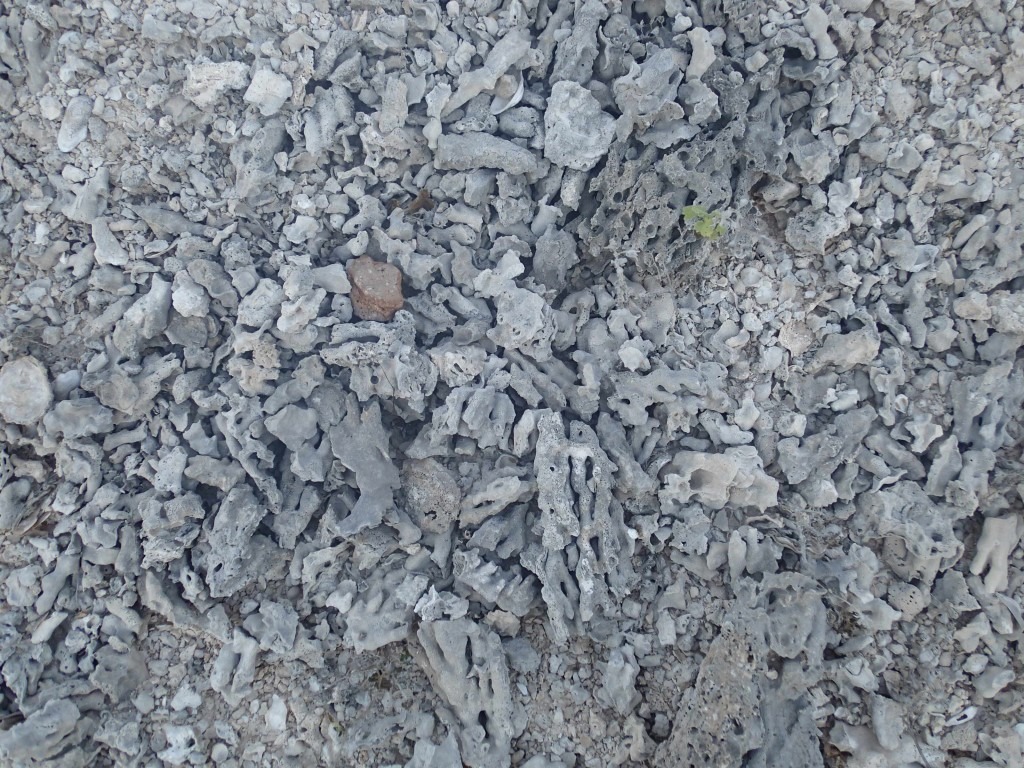
Day 9 – Nov 28th, The elusive barrel cactus
We arrived to Isla Coronados late on Thanksgiving day as the weather was too rough in the morning. As such I was obliged to over-eat and relax a little, reaching the island the next day. So different from the last two islands, despite so many of the same plant species. There were beautiful flats of flowers by the shore. I vouchered several species without known herbarium specimens and hiked with Beth and Glen across the island. Coronado Island is a lot smaller than Carmen and Danzante and easier walking, less elevation, less scree, and more open vegetation. Jim and Corwin moved the sailboat to the east side of the island to pick us up at the end of our hike. As we started down the slope towards them I mentioned that one plant we had not seen (to my surprise) was the island barrel cactus (Ferocactus diguetii var. diguetii)– known only from the gulf islands and not seen by us on Carmen or Danzante, although reported from both. Also I knew that my friend and colleague Dr. Jon Rebman from San Diego Natural History Museum hadn’t seen it on his visit to some of the islands last year, so I started to wonder if we should be concerned about this species.
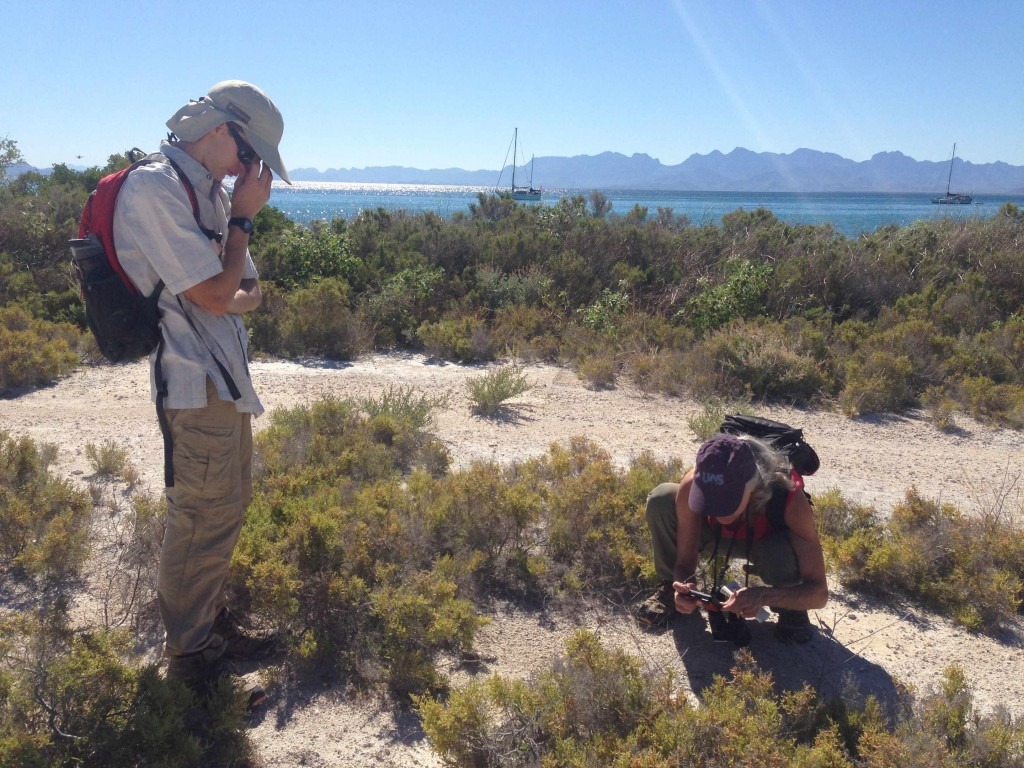
I was telling my companions that I had also seen decreasing numbers of endemic barrel cacti on the pacific islands, and I idly wondered if there was a disease affecting them. Corwin and I had found the remains of three small barrel cacti on Carmen Island, but they had obviously been dead a long time. That’s when I looked up the cliff above us and I saw it. Just one plant, so distinctive on the landscape. It had to be the barrel cactus!
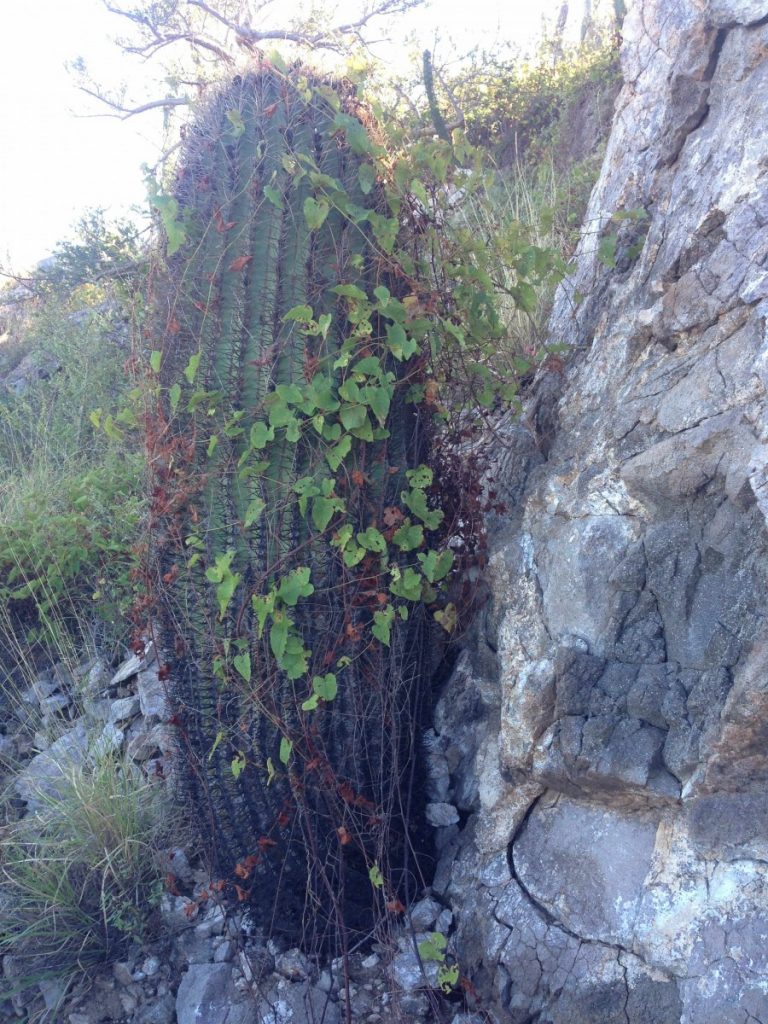
I left my pack, took just the radio and my camera, and starting hiking back up the slope. She was so worth it! This lone specimen, the only one I’ve seen on my travels, was six foot high! In my excitement I tried to take a botany selfie, with limited success, but the point is that the cactus lives. And this one must be very old. She’s huge. I do wonder why we aren’t seeing any smaller ones. Why so few individuals? Are they failing to reproduce? There were no old fruit or flowers on this plant, but she was a joy to behold. Is the future of the barrel cactus uncertain? I suspect this population is in decline, and it would be a great shame to lose such a majestic species. I feel thrilled that I have had a chance to see this species in the wild, in one of the very few places that it exists.
Day 10 – Nov 29th, Last day
Today hurts because it’s my last day. Last night I suffered some kind of strange torture as I pressed my plants into the night while everyone else was fishing… My diligence was rewarded by Glen’s spectacular curry for dinner, and then we played a few rounds of poker before bed. I’ve reassembled the press, and it is drying in the engine room. I am excited to fully identify some of yesterday’s collections and hope I’ve made some important contributions amongst the 88 species we have vouchered. It’s been the trip of a lifetime, and I will dream of returning to explore some more. But now I must prepare myself for re-entry into the mainland world. We have had some moments of phone service here at Coronados, and it’s been nice to connect and be sure home is okay, yet I’ve little desire to leave this boat. I’ve become very fond of my traveling companions, and I have so many questions about the ecology of these islands… I can’t remember what was so important that I needed to leave. The Sea of Cortez has worked its magic on me.
